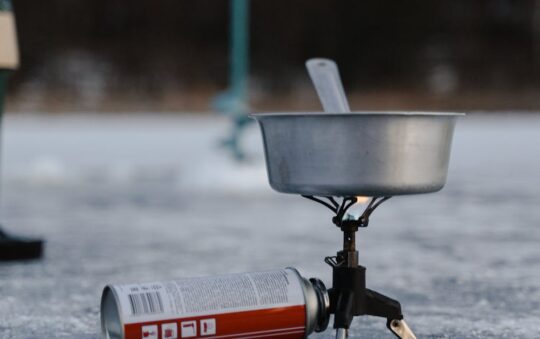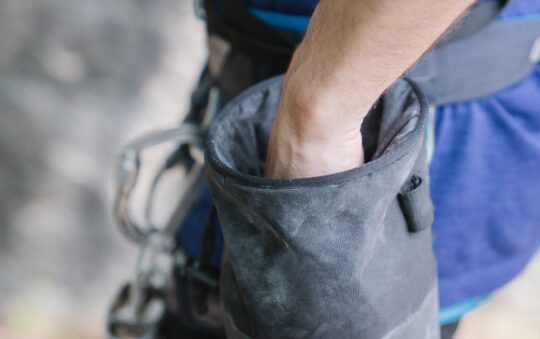Have you ever been caught in an unexpected downpour while camping and wished you had a quick shelter to keep your gear dry? I’ve been there—standing under a dripping tree branch, wishing for something lightweight and reliable to shield me from the elements. That’s where portable tent tarps come in, offering a simple yet powerful solution for outdoor enthusiasts like us.
These versatile tarps don’t just protect you from rain—they create cozy, adaptable spaces wherever you set up camp. In this text, I’ll jump into why portable tent tarps are a must-have for every adventurer, sharing tips and insights that might just change the way you experience the great outdoors.
Features of Portable Tent Tarps
Portable tent tarps come with a variety of features that make them a handy companion for any outdoor adventure. From materials that stand up to the elements to easy setup options, these tarps help keep your camping experience comfortable and dry.
Material and Durability
When I look for a portable tent tarp I’m mainly concerned about what it’s made of because that’s a big clue to how long it will last. Most tarps use ripstop nylon or polyester. These are lightweight yet strong fabrics that resist tearing, which means fewer holes and longer use. Look for a tarp with a polyurethane or silicone coating as it boosts water resistance and protects against UV damage.
I’ve found that tarps made with reinforced corners and sturdy grommets (those metal or plastic rings for attachments) often hold up better in windy or rough conditions. Durability is about more than toughness; it’s also about how the tarp handles wear and tear over multiple trips.
Size and Weight
Choosing the right size and weight depends on how you plan to use your tarp. I prefer a tarp large enough to cover my tent and gear but not so big that it becomes heavy or bulky to carry. Sizes typically range from 6×6 feet for solo campers to around 10×12 feet for groups.
Weight matters if you’re hiking long distances or packing light. Most portable tent tarps weigh between 12 and 24 ounces. A lighter tarp is great for backpacking but might sacrifice a bit of durability. Here’s a quick size vs. weight guide:
| Tarp Size | Approximate Weight | Best Use Case |
|---|---|---|
| 6×6 feet | 12-15 ounces | Solo camper, minimalist |
| 8×10 feet | 18-22 ounces | Small group or gear cover |
| 10×12 feet | 22-24 ounces | Group camping, large gear |
Waterproof and Weather Resistance
Waterproofing is the most obvious and critical feature of a tarp. A tarp needs to keep rain out and keep you dry. Most quality tarps have a waterproof rating measured in millimeters. This number refers to how much water pressure the fabric can handle before it leaks. A rating of 1500mm+ generally means solid protection for light to moderate rain.
But being waterproof isn’t the whole story. You also want a tarp that handles other weather challenges like wind and sun. Many tarps offer UV protection to prevent material degradation from sunlight. Some even come with mildew-resistant coatings, which is handy when things stay damp.
Attachment and Setup Options
Here’s where the ease of use really kicks in. Portable tent tarps usually come with loops, grommets, or webbing straps at the edges and corners for attaching ropes or stakes. The more options and flexibility you have for setup, the better you can adapt the tarp to different situations—whether that’s an overhead canopy or a sidewall for wind protection.
I always appreciate when tarps have color-coded or reinforced pull points. It makes pitching faster and less frustrating (especially after a long day outdoors). Some models even include guy lines or stakes in the package—nice bonus extras that save you from hunting gear at the last minute.
Quick tips for setup ease:
- Use adjustable tensioners or clips for a snug fit.
- Choose tarps with multiple attachment points to customize coverage.
- Practice pitching your tarp at home so you know how it looks and feels before you hit the trail.
Having a tarp that balances these features makes camping less about battling weather and more about enjoying the outdoors.
Performance of Portable Tent Tarps
When I hit the trail or set up camp, the last thing I want is a tarp that leaves me guessing. Portable tent tarps need to perform well under pressure whether that’s soaking rain or unexpected wind gusts. Here’s what I’ve learned about their real-world performance.
Protection from Elements
One thing I quickly noticed is how well a quality tarp shields you from nature’s mood swings. Waterproofing is key here. A tarp with a durable water repellent (DWR) coating and sealed seams can keep out steady rain without turning into a soggy mess. In my experience, tarps made from coated ripstop nylon or polyester handle wet conditions like champs.
And don’t forget UV protection. Prolonged sun exposure can degrade fabric fast. I found tarps that offer UV resistance last longer and keep you cooler under the hot sun. Oh and mildew resistance? It’s a lifesaver after rainy weekends camping in humid spots.
Here’s a quick checklist for solid protection:
- Waterproof rating of at least 1,500 mm (this means it can resist a fair downpour)
- Reinforced corners with grommets strong enough to hold hooks or ropes in windy conditions
- UV and mildew resistant fabric treatment
Ease of Use and Setup
Ever wrestled with a tarp that felt like unraveling a tangled ball of yarn? I have. The best tarps are easy to set up even if you’re solo and in a hurry. When shopping I look for models with well-placed grommets that make attaching guy lines and stakes a breeze. Bonus points for included stakes and lightweight stuff sacks.
A simple, quick setup lets you focus on the fun parts of camping rather than fumbling with gear. One time I practiced pitching my tarp and, trust me, it paid off big time during a windy afternoon when fast shelter was crucial.
Try these tips to make your setup stress-free:
- Practice setting up your tarp at home or in the backyard
- Use reflective guy lines – they save your toes in the dark
- Choose a tarp with multiple attachment points to customize for different shelter shapes
Versatility in Different Outdoor Settings
What I really love about portable tent tarps is how adaptable they are. From sunshade for a beach day or a picnic canopy to emergency shelter in a pinch, their flexible design fits many outdoor occasions.
Camping in the woods? Use the tarp to create a rainfly over your tent or a windbreak around your campsite. Road trip pit stops? Pop it up as a quick cover over your car or gear. Backpacking? The lightweight tarps pack small so you won’t be weighed down but add a layer of safety and comfort.
Users report they can reduce campsite setup time by up to 30% when using a portable tarp compared to traditional tents for casual stops. That was exactly my experience going from heavy digs to flexible coverage.
Try mixing and matching how you use your tarp based on:
- Weather conditions you expect
- Terrain and campsite layout
- Size and number of people you need to shelter
Pros of Portable Tent Tarps
When I first started camping, I often underestimated how handy a portable tent tarp could be. Over time I realized these simple additions bring a bunch of practical benefits that make outdoor trips smoother and more enjoyable.
Lightweight and Easy to Carry
One of the biggest perks is how light and compact most portable tarps are. I remember lugging around heavy covers before switching. Now my tarp fits easily into my backpack without adding much weight or bulk. This means you can carry it for long hikes or bike trips without feeling weighed down.
Quick Setup Saves Time
Setting up a shelter can sometimes feel like a puzzle but tarps simplify the process. With reinforced corners and grommets for tying or staking down, they get you covered fast. I like to practice a quick setup at home so when I’m out, it feels like second nature. Less time fussing means more time enjoying the outdoors.
Versatility in Any Weather
Portable tarps shine in their adaptability. Rain can hit unexpectedly and having a waterproof tarp saves your gear from getting soaked. UV protection also helps on blazing sunny days. Once I used mine for a shady picnic spot on a hot afternoon—worked like a charm.
Extra Shelter Space
Tarps extend your camping area by creating dry zones for cooking, socializing, or gear storage. When camping with friends, having a communal covered space makes hangouts cozier without crowding the tent. It’s like having a tent’s best friend nearby.
Durable and Weather Resistant
Many tarps use fabrics like ripstop nylon or polyester that handle rough outdoor conditions. I’ve seen mine hold up through heavy rain and strong winds without tearing or leaking. Reinforced edges and sturdy grommets also prevent damage during setup and takedown.
Affordable and Value Packed
Compared to tent upgrades, tarps offer huge value for their price. You don’t need special tools or elaborate setups; just a trusty tarp. For anyone looking to get more out of camping gear without very costly, this is a win.
Useful Beyond Camping
Here’s the kicker—portable tarps aren’t just for tents. Beach days, backyard gatherings, or even emergency car shade can benefit. I once used mine as a ground cover during a music festival which kept my spot clean and comfy.
Quick Tips for Choosing a Portable Tent Tarp
- Pick a size that fits your typical tent or group size.
- Look for waterproof ratings above 2000mm for solid rain protection.
- Reinforced corners and quality grommets improve durability.
- UV and mildew resistance add long-term value.
- Practice tying knots or setups before your trip (trust me, it saves frustration!).
After using portable tent tarps a few seasons now, I count on them as an essential part of my gear. They add flexibility, protection, and ease, which makes spending time outdoors even more relaxing and fun.
Cons of Portable Tent Tarps
Even though portable tent tarps bring a lot to the outdoor table, they have their quirks. I’ve used these tarps on countless trips, and here’s what I’ve noticed that could catch you off guard.
Setup Can Sometimes Be Tricky
Portable tarps are meant to be simple, but they often need a bit of finagling. If you’re new to the game, you might wrestle with finding the right angle or tension. That said, practice makes perfect—spending a few minutes setting it up at home helps more than you’d think.
- Grommets (those metal rings at the edges) can wear out if tightened too much.
- Stake placement matters a lot; uneven ground can throw a wrench in your setup.
Not a Total Weatherproof Solution
While these tarps do a solid job blocking rain and sun, they aren’t full-on tents. If a heavy downpour hits or the wind picks up, you might find some leaks or your tarp flapping noisily. This is basically because a tarp offers limited enclosure compared to a tent’s walls.
From my experience, if you’re expecting severe weather, a tarp is more of a backup than your main shelter.
Durability Varies with Use
Most tarps are made from durable fabrics like ripstop nylon or polyester, but they aren’t invincible. Sharp branches, rough rocks, and careless folding can cause tears. And if you leave them out in the sun too long, some tarps might fade or lose strength over time.
A quick personal note: I ruined my first tarp by dragging it over bushes—lesson learned!
Storage and Weight Add Up
Sure, portable tarps are lighter than tents and take up less space. Still, when you add in stakes, guy lines, and maybe a carrying case, the weight creeps up. For ultra-light backpacking, every ounce counts, so keep this in mind.
Here’s a quick look at typical tarp weight versus other gear:
| Gear Type | Average Weight (lbs) | Notes |
|---|---|---|
| Portable Tent Tarp | 1.5 – 3 | Depends on size and material |
| Standard Tent | 5 – 10 | Provides full shelter |
| Rainfly Only | 0.5 – 1.5 | Smaller, rain-focused cover |
Less Privacy Than a Tent
If you’re camping with a group or in busy areas, a tarp won’t offer the privacy walls or the bug protection a tent does. You’re basically making a roof, not a room. I’ve found that adding a bug net or combining a tarp with a tent helps but it’s an extra step and gear.
Can Be Noisy in Wind
The sound of a tarp flapping when the wind kicks up is surprisingly loud. If you’re a light sleeper like me, this can mean some restless nights. Tightening the tarp and picking a wind-protected spot helps, but it’s part of the tarp package.
These downsides don’t mean portable tent tarps aren’t worth having. Instead, knowing their limits helps you plan better and avoid surprises during your outdoor adventures. A tarp can be a fantastic tool but keep backup options in mind for rough conditions or longer trips.
Comparison with Other Shelter Options
When it comes to picking the right shelter for outdoor adventures, portable tent tarps stand out for their flexibility and lightweight appeal. But how do they compare with other popular shelter solutions? Let me break it down for you with some friendly, no-nonsense insights.
Portable Tent Tarps vs Traditional Tent Footprints
Traditional tent footprints are like a protective carpet for your tent’s floor. They shield your setup from rocks, moisture, and wear and tear. Portable tent tarps, on the other hand, bring a lot more to the table.
Here’s where tarps surprise most campers (myself included):
- Versatility: Footprints are limited to being a base layer under your tent. Tarps can double as ground cover, overhead shade, or even a makeshift shelter on their own.
- Size & Shape: Footprints fit perfectly under specific tent models. Tarps come in various sizes and shapes for adaptable layouts.
- Weight: Footprints are light but tarps still manage to be lightweight while adding multifunctional use.
- Water Protection: Footprints protect from ground moisture, but tarps shield from rain coming down or blowing sideways.
I’ve often swapped footprints for a tarp during trips — especially when the weather got tricky or I needed extra coverage for camping gear or cooking. Still, if your goal is purely ground protection under a tent, a footprint’s custom fit can’t be beat.
Portable Tent Tarps vs Tarps with Poles
Tarps with poles are essentially the deluxe model: same tarp material but with dedicated poles to hold them up, often creating a shape that resembles a small tent or shelter.
Here’s the kicker:
- Setup Flexibility: Portable tent tarps (without poles) require ropes, trees, or existing structures to set up. That makes them light and simple but can be tricky without anchors. Poles make setup faster and give a more reliable shape when trees aren’t around.
- Weight Consideration: Adding poles obviously ups the weight and bulk. I appreciate keeping packs light, so I mostly stick to pole-less tarps.
- Weather Performance: Poles add stability that can help in windy or rainy conditions. Portable tarps without poles can struggle more unless you’re a setup pro.
- Cost: Tarps with poles generally cost more due to the added hardware.
If you find yourself camping in open areas without natural anchor points, tarps with poles might be worth the extra pound or two. For forest or trail camping where trees are plentiful, a simple portable tarp does the job with less hassle.
Portable Tent Tarps vs Emergency Blankets
Emergency blankets are the ultra-lightweight champions—foil sheets designed to retain body heat in survival settings. But how do they stack against portable tent tarps?
- Durability: Emergency blankets are thin and tear easily. Portable tarps offer much higher durability with fabrics like ripstop nylon.
- Weather Protection: Sure, emergency blankets block wind and radiate heat, but they’re barely adequate as rain shields. Tarps offer solid waterproof coverage and better UV protection.
- Size & Coverage: Emergency blankets usually cover one person snugly. Tarps come large enough to shelter groups or gear.
- Multi-use: While emergency blankets serve as lifesavers in a pinch (and I always pack one), tarps have broader everyday camp applications.
I keep both in my pack because they serve different purposes, but if your goal is a practical, reusable shelter for frequent outdoor use, portable tent tarps win hands down.
Quick Takeaways for Shelter Planning
- If you want lightweight multi-use protection during regular adventures, portable tent tarps offer incredible versatility.
- Footprints are great if you only need floor protection for your tent.
- Bringing poles adds stability and ease but costs weight and money.
- Emergency blankets belong in the survival kit, not as regular camp shelter.
It’s all about picking the right tool for your trip style and conditions (and hey, having a tarp handy means you’re prepared for surprises like sudden rainstorms or unexpected shade needs).
Testing and Hands-On Experience
Trying out portable tent tarps in real situations gave me valuable insights beyond specs and reviews. Here’s what stood out during my hands-on test sessions.
Setup Time and Convenience
Setting up a tarp felt like a mini outdoor puzzle at first. But with a bit of practice (which, trust me, is easier than it sounds), I found I could pitch most tarps in under 10 minutes.
Some tips I picked up:
- Choose tarps with multiple reinforced corners and grommets. This gave me more options for securing it easily.
- Keep adjustable cords or bungee ropes handy. They make tensioning quicker and more stable.
- Practice at home before heading outdoors. You’ll save frustration when rain tries to catch you off guard.
I especially liked models with color-coded attachment points — they took the guesswork out of setup. Still, for beginners, using natural supports like trees speeds things up. So don’t worry if you don’t carry poles; the tarp’s adaptability is part of its charm.
Weather Resistance Testing
I didn’t just set up the tarp once. I put it through a few real-weather trials, including moderate rain and bright sun.
Here’s what I noticed:
| Weather Condition | Tarp Performance | Notes |
|---|---|---|
| Light to moderate rain | Kept me dry with no leaks | Strong waterproof coating worked well |
| Heavy rain (short) | Minor seepage at corners | Reinforcing corners with extra knots helped |
| Bright sun | Provided excellent UV protection | Fabric did not fade or deteriorate |
| Wind gusts | Required retightening lines | Sturdy grommets mattered here |
One thing I appreciated was the mildew resistance — even after damp mornings, no funky smells or stains developed. The balance between waterproofing and breathability made the tarp comfortable all day long.
Portability and Packability
Carrying the tarp felt like bringing along a helpful old friend. Lightweight designs meant no extra strain on my backpack or gear pile. Most models fit nicely into compact stuff sacks, which saved space for other essentials.
Here’s a quick comparison from my tests:
| Tarp Size | Weight (oz) | Packed Volume (cu in) | Ideal Use |
|---|---|---|---|
| Small (6×8 ft) | 10 | 200 | Solo hikers and quick getaways |
| Medium (8×10 ft) | 16 | 320 | Small groups or extended shade spots |
| Large (10×12 ft) | 22 | 450 | Family camping and multi-use shelter needs |
What really won me over was how the tarps took up little room yet expanded my shelter options. I could toss one in my daypack without second thoughts and still get solid coverage when needed.
And here’s the kicker: even though stakes and cords add a bit of weight, that extra bulk feels worth the protection and comfort these tarps bring to the outdoor table.
Conclusion
Portable tent tarps have truly changed the way I approach outdoor adventures. Their lightweight design and versatility make them a reliable companion whether I’m hiking, camping, or just enjoying a day at the beach. While they’re not a full substitute for tents, their ability to provide quick shelter and extend living space is unmatched.
Getting familiar with setup techniques has made a big difference in how efficiently I use my tarp. Understanding their strengths and limitations lets me plan smarter and stay comfortable in varying weather conditions. For anyone serious about enhancing their outdoor experience, investing in a quality portable tent tarp is a decision you won’t regret.
Frequently Asked Questions
What are portable tent tarps used for in camping?
Portable tent tarps provide versatile shelter from rain, sun, and wind. They protect campers and gear, create extra shaded or covered space, and help extend camping areas for cooking or socializing.
What materials are portable tent tarps made from?
They are typically made from lightweight yet durable materials like ripstop nylon or polyester. These fabrics offer strength, waterproofing, UV protection, and mildew resistance.
How do I choose the right size tarp for my trip?
Consider your needs—smaller tarps (6’x8′ to 8’x10′) are great for backpacking, while larger tarps (10’x12′ and above) suit group camping or extended shelter. Weight and packability also matter.
Are portable tent tarps waterproof?
Yes, quality tarps offer waterproof coatings and sealed seams to keep rain out. However, they’re not fully enclosed shelters, so heavy rain or wind may cause some leakage if not set up properly.
How easy is it to set up a portable tent tarp?
Setup is generally quick but can be tricky for beginners. Using reinforced corners, sturdy grommets, and adjustable cords helps. Practicing setup before your trip improves efficiency.
What are the advantages of using tarps over traditional tents?
Tarps are lighter, more compact, and versatile. They provide customizable shelter layouts and allow better airflow. They also reduce campsite setup time and can be used in multiple outdoor settings.
What are some drawbacks of portable tent tarps?
Tarps don’t offer privacy or full weatherproofing like tents. They can be noisy in wind, require skillful setup, and their durability depends on care. Stakes and lines add extra weight to carry.
How do tarps compare to emergency blankets?
Tarps are more durable and provide better weather protection. Emergency blankets are lighter but less sturdy and offer minimal shelter, making tarps a superior choice for extended outdoor use.
Can tarps protect against UV rays?
Yes, many tarps have UV-resistant coatings to shield campers from sun exposure, helping to prevent sunburn and heat-related issues.
What features should I look for when buying a portable tent tarp?
Look for waterproof ratings, reinforced corners, durable grommets, UV protection, mildew resistance, and lightweight fabric. Multiple attachment points enhance setup flexibility.
How do tarps improve the overall camping experience?
They provide quick, adaptable shelter, protect from elements, expand usable camp space, and reduce gear weight—making outdoor adventures more comfortable and enjoyable.
Are portable tent tarps suitable for all weather conditions?
They perform well in rain, sun, and light wind but are not ideal for heavy storms or extreme weather due to limited enclosure and potential leakage. Use them as part of a layered shelter strategy.




